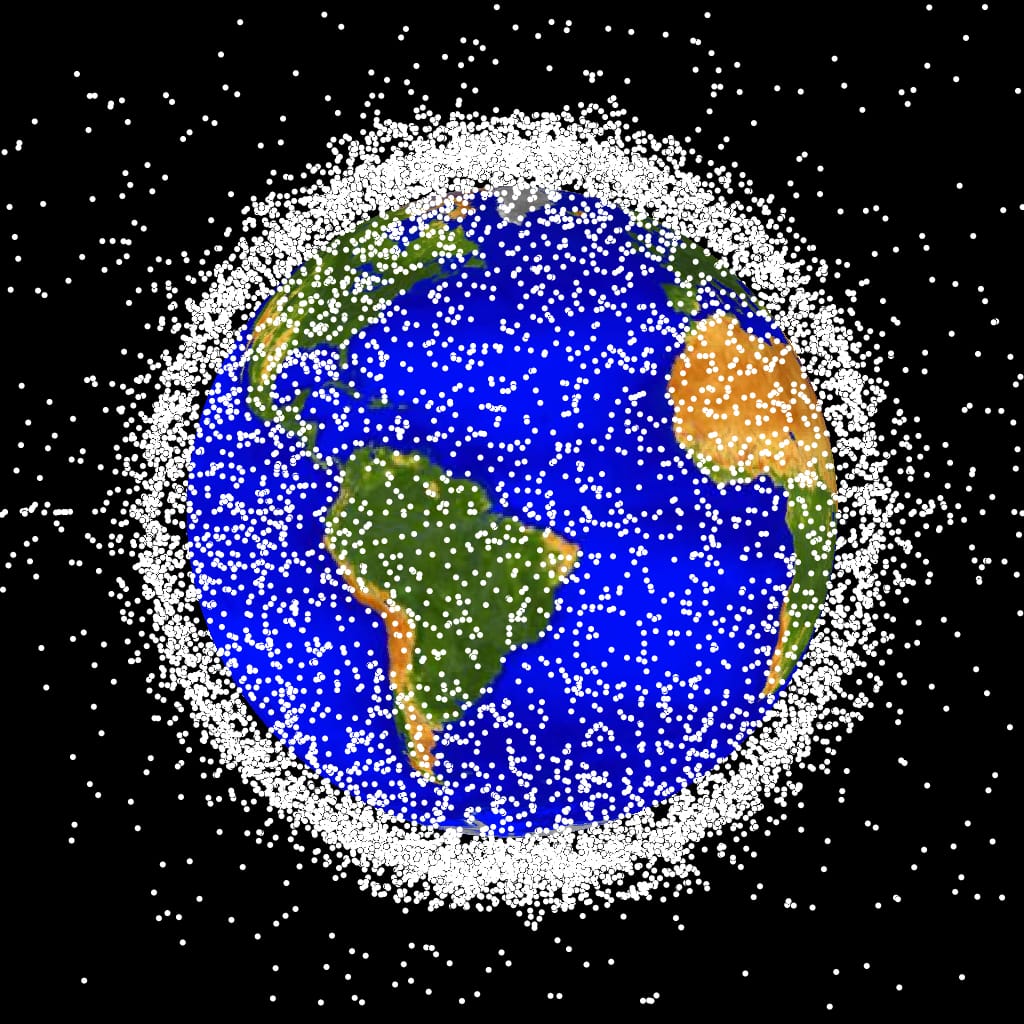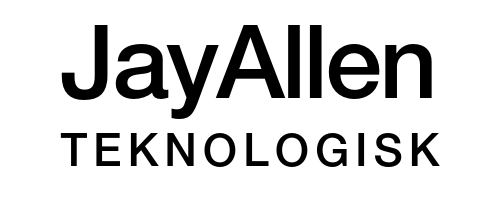AI-Driven Space Traffic Control: Protecting the Orbital Environment

On a clear night, a speck of paint from a decommissioned satellite can still be hurtling towards the next generation of Earth-orbiting technology at more than 10 kilometres per second. With over 11,000 active satellites currently circling Earth and more than 1.2 million pieces of space debris larger than one centimetre, the need for robust, automated collision-avoidance systems has become critical for both commercial operations and national security. Artificial intelligence is transforming what used to be a manual, reactive exercise into proactive, real-time traffic control for space. Its capacity to process petabytes of tracking data, negotiate manoeuvres between operators, and guide autonomous debris-removal vehicles represents a fundamental shift in how we manage orbital safety.
From Manual Intervention to Automated Systems
The European Space Agency's Collision Risk Estimation and Automated Mitigation (CREAM) project, started in 2020, is replacing chaotic chains of human decision-making with an automated system that aims to reduce operator workload, false alerts, and response times whilst improving mission safety. Currently, teams of specialists must manually assess threats, calculate risks, and coordinate with other operators when collisions seem likely. This process is time-consuming, labour-intensive, and prone to communication breakdowns that can complicate emergency responses.
CREAM's AI negotiator allows satellite operators, space-monitoring services, regulators and observers to share information through a single platform, much like air traffic control coordinates flights. The system can evaluate potential conjunctions, generate manoeuvre plans, and support decision-making processes whilst coordinating with other operators. Although currently operating as a ground-based prototype developed by GMV and Guardtime, the plan is to deploy space-based versions through piggyback missions where CREAM will ride aboard other spacecraft as a digital payload, plus a dedicated demonstration mission targeted for 2027-2028.
Machine Learning Transforms Debris Detection
Artificial intelligence is already revolutionising how we track space traffic. Deep learning architectures, particularly You-Only-Look-Once (YOLO) frameworks (yes, this is a real framework!), have demonstrated significant improvements in detecting small space objects through radar observations, outperforming conventional target detection approaches. These AI algorithms analyse terabytes of data from radar, optical sensors and telescopes in real time, continuously improving from training sets that include thousands of images of known debris.
Image-recognition models can distinguish between paint chips, meteoroids and larger debris, giving satellite operators a much clearer picture of risks in their environment. AI-powered systems significantly enhance space situational awareness by combining real-time data from various sensors to create comprehensive maps of the space environment. Recent demonstrations have shown remarkably high detection rates using onboard AI technology, even at low signal-to-noise ratios, whilst reducing the data that needs to be downlinked from spacecraft.
These systems provide the foundation for up-to-the-minute maps of orbital clutter that are essential for protecting both commercial and defence satellites. The ability to process and analyse vast quantities of sensor data autonomously means that potential threats can be identified and tracked far more efficiently than through manual methods.
Real-Time Traffic Management for Orbit
CREAM demonstrates how an automated system can evaluate potential crashes, generate precise manoeuvre plans, and support decision-making with minimal human intervention. Acting as a rules-of-the-road controller for space, the system is designed to allow operators to comply with best practices and rules whilst enabling regulators to monitor compliance.
One of CREAM's most innovative features is its ability to facilitate negotiations between operators when potential collisions involve two active satellites rather than debris. The system is highly adaptable, enabling non-technical users to define evolving standards and ensuring long-term relevance as best practices, international norms, and technologies continue to mature. This flexibility is crucial in an environment where both the technology and the regulatory landscape are rapidly evolving.
By embedding CREAM onboard spacecraft, operators could seamlessly comply with emerging best practices and international norms, whilst regulators would gain a powerful monitoring tool to ensure compliance. The future will see these algorithms running not only on the ground but also in space, guiding autonomous spacecraft to approach and deorbit debris, providing a permanent solution to orbital congestion.
Autonomous Systems for Debris Removal
Robotic manipulators designed for on-orbit servicing and active debris removal are advancing rapidly, with various mechanisms including reciprocally bonded, internally caged, and externally folded end-effectors designed to capture non-cooperative targets. AI enhances these technologies by providing autonomous guidance, optimising approach trajectories and reducing the risk of secondary fragmentation during capture operations.
ESA has contributed advanced guidance, navigation and control systems along with vision-based AI, allowing chaser satellites to close safely on targets autonomously. The ClearSpace-1 mission planned for 2029, for instance, plans to use a quartet of robotic arms to capture and deorbit debris. Companies like Astroscale are developing missions that will use robotic arms to grab defunct satellites by their launch adapter rings before dragging them into lower orbits where they will speedily enter Earth's atmosphere and burn up.
These systems integrate real-time data processing and AI-driven decision-making to optimise debris capture and removal efficiency, with machine vision, radar, and laser rangefinders enabling autonomous tracking, approach, and docking with uncooperative objects of various sizes and spin rates. With machine-learning models that learn from each mission, future removal vehicles will become more efficient and safer, helping to maintain a sustainable orbital environment.
The Dual-Use Challenge
AI-driven debris removal and traffic-management systems present significant dual-use concerns. Any system capable of approaching, grappling, and removing defunct satellites possesses inherent anti-satellite warfare capabilities, raising concerns among defence analysts about weaponisation potential. Whilst designed to protect satellites from accidental collisions, the same technology could theoretically be used to deny adversaries satellite access or to target critical national security assets.
Activities like satellite servicing, in-orbit servicing and manufacturing, debris removal and space logistics are inherently ambiguous in their applications, as they could be repurposed for harmful actions, including disabling or interfering with other satellites. Space launch vehicles, satellites with manoeuvring capability, active debris removal systems, and spacecraft all have broad dual-use consequences that can eventually lead to concerns about the weaponisation of outer space.
Active debris removal is a dual-use capability, meaning it can be used for civilian purposes but also for military ends, and the opaque nature of some nations' missions could generate more suspicion than goodwill. The international community faces growing pressure to establish clear protocols and verification mechanisms for active debris removal operations to prevent misunderstandings and maintain orbital stability.
Nations face the challenge of regulating and securing these systems so they cannot be weaponised or exploited. CREAM's negotiation feature demonstrates AI's ability to enforce emerging rules of the road, while also highlighting the need for robust governance frameworks that can adapt to evolving technology.
Establishing Rules of the Road
CREAM can support future space traffic management frameworks by offering a standardised toolset that allows operators to comply with best practices and rules while regulators monitor compliance. Establishing rules of the road in orbit has long been hindered by a chicken-and-egg dilemma: rules are hard to enforce without the technology to apply them, and technology adoption lags without clear rules.
International efforts at space traffic management face numerous challenges, including a lack of regulations for determining responsibility for collision avoidance, a lack of obligatory pre-launch notifications, and a lack of legally binding agreements to provide space situational awareness data. Threats against space systems span a broad spectrum, and the ambiguity of dual-use space systems that blur civilian and military functions requires coordinated measures from all stakeholders.
International bodies such as the United Nations Office for Outer Space Affairs and the European Space Agency are exploring frameworks that will formalise these norms. France's space defence strategy acknowledges the growing threats to space security, including space debris, cyberattacks and the development of counterspace capabilities by adversaries, whilst emphasising the importance of international partnerships. These efforts aim to ensure that all players can monitor compliance and that systems remain relevant as space technology advances.
The Path Forward
Artificial intelligence is fundamentally reshaping how we manage the growing clutter around Earth. From automated collision-avoidance protocols to autonomous debris-removal vehicles, AI is becoming an essential tool for protecting both commercial operations and national security interests in space. At current velocities, even a paint chip can damage a spacecraft, whilst larger debris can destroy entire satellites, turning collision avoidance into a daily operational concern.
As the world moves towards an era of intensified orbital activity, with thousands more satellites planned for launch in the coming years, it's vital for policymakers, technologists and industry leaders to work together. The challenge is establishing shared standards and transparent operational frameworks that balance security concerns with environmental stewardship. Future debris removal missions will likely require enhanced transparency measures, including real-time mission reporting, international observer access, and standardised operational procedures to distinguish peaceful activities from potential military applications.
Success will require international cooperation that acknowledges both the urgent need for debris mitigation and the legitimate security concerns of nations. Only through such collaboration can we maintain a sustainable environment that serves both civilian and defence needs, ensuring that future generations can continue to benefit from the remarkable capabilities that space-based systems provide to societies around the world.
References
- “CREAM: Avoiding Collisions in Space Through Automation,” n.d. https://www.esa.int/Space_Safety/Space_Debris/CREAM_avoiding_collisions_in_space_through_automation.
- Thompson, Mark. “CREAM’s Role in Mitigating Kessler Syndrome Risks.” IEEE Spectrum, August 20, 2025. https://spectrum.ieee.org/kessler-syndrome-esa-cream-ai.
- Cerrada, Patricia, Francisco Cabral, Pedro Lourenço, and Benjamin Bastida Virgili. “Advancing Autonomous Collision Avoidance: The CREAM-IOD Mission for Safe and Sustainable Satellite Operations.” ResearchGate, April 1, 2025. https://www.researchgate.net/publication/395255172_Advancing_autonomous_collision_avoidance_The_CREAM-IOD_mission_for_safe_and_sustainable_satellite_operations.
- Massimi, Federica, Pasquale Ferrara, Roberto Petrucci, and Francesco Benedetto. “Deep Learning‐based Space Debris Detection for Space Situational Awareness: A Feasibility Study Applied to the Radar Processing.” IET Radar Sonar & Navigation 18, no. 4 (March 6, 2024): 635–48. https://doi.org/10.1049/rsn2.12547.
- Team, FlyPix Ai. “The Critical Role of Space Debris Mapping in Protecting Space Operations.” Flypix, December 13, 2024. https://flypix.ai/blog/space-debris-mapping/.
- Warren, Jena. “Tackling the Growing Issue of Space Debris.” Aitech Website, February 4, 2025. https://aitechsystems.com/tackling-space-debris/.
- “Hybrid Edge-Cloud AI Accelerated Astrometric Reduction Pipeline for Agile Near-Real Time In-Situ Space Surveillance and Tracking | Nebula Public Library,” 2022. https://nebula.esa.int/content/hybrid-edge-cloud-ai-accelerated-astrometric-reduction-pipeline-agile-near-real-time-situ.
- Fallahiarezoodar, Nasim, and Zheng Hong Zhu. “Review of Autonomous Space Robotic Manipulators for On-Orbit Servicing and Active Debris Removal.” Space Science & Technology, April 30, 2025. https://doi.org/10.34133/space.0291.
- Tamanna, Yasmin, and Yasmin Tamanna. “10 Top Space Debris Removal Companies to Watch in 2025.” StartUs Insights, February 19, 2025. https://www.startus-insights.com/innovators-guide/space-debris-removal-companies/.
- “ESA Purchases World-first Debris Removal Mission From Start-up,” n.d. https://www.esa.int/Space_Safety/ESA_purchases_world-first_debris_removal_mission_from_start-up.
- “ClearSpace-1,” n.d. https://www.esa.int/Space_Safety/ClearSpace-1.
- NASA Space News. “China Develops Space Debris Removal Technology: Breakthrough or Military Threat?” NASA Space News | Your Daily Premier Source for Space Exploration, Innovation, and Astronomy News and Updates. (blog), October 8, 2025. https://nasaspacenews.com/2025/10/china-develops-space-debris-removal-technology-breakthrough-or-military-threat/.
- Cournoyer, Julia. “Securing the Space-based Assets of NATO Members From Cyberattacks.” Chatham House – International Affairs Think Tank, May 15, 2025. https://www.chathamhouse.org/2025/05/securing-space-based-assets-nato-members-cyberattacks.
- NSTXL. “The Future of Space Is Powered by Dual Use Technology - NSTXL,” July 28, 2025. https://nstxl.org/the-future-of-space-is-powered-by-dual-use-technology/.
- UNIDIR → Building a More Secure World. “Outer Space Security Conference 2025 → UNIDIR,” September 3, 2025. https://unidir.org/event/outer-space-security-conference-2025/.
- United Nations Office for Outer Space Affairs. (2025). Space traffic management: legal challenges and opportunities. Committee on the Peaceful Uses of Outer Space.





